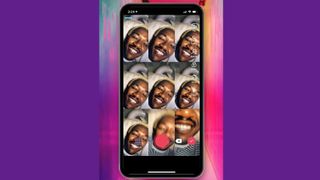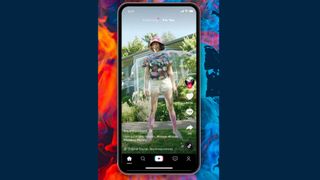TikTok is likely already used by many of your students so it makes sense to take advantage of their affinity for the social media platform by using it as part of a teaching plan. Sure, some teachers may simply ban the platform from the classroom entirely. But since students will likely use it anyway, outside of class, it can pay to go with the flow and work that into education.
The app is free to use, encourages creativity with its video making and editing features -- and is likely understood by most students already. Of course, it's not all positives as this is an open platform with plenty of inappropriate content. So using this responsibly and mindfully, and talking about that with the class, is of paramount importance.
That all in mind, this can be a creative way to have students submit work, with rewards as a way to better engage students both digitally and in the classroom itself.
Beyond direct student use, TikTok can also be a useful way for educators to connect with one another, to share ideas, tips, and hacks, and to get to know others from the wider community.
So if the use of TikTok in your class is a consideration, this guide should help you weigh up all the options.
What is TikTok?
TikTok is a social media app, created and owned by Chinese company ByteDance. It allows users to create and edit videos of three to 15 seconds, or string together videos of up to 60 seconds. However, this is only when recorded within the app – if you upload from another source, videos can be longer. The platform is built to make music videos, lip-sync, dance, and comedy shorts, but it really lets you do anything you need, and is easy to use.
Access to content can be limited to a select group of friends or family, or in this case, to the classroom students and teacher only. So students and teachers can enjoy creating videos without the concerns that they will be viewed by a wider audience.

How can TikTok be used in the classroom?
Teachers are using TikTok as a way to set digital assignments. A very useful feature in the classroom, but even more so for remote learning and home-based assignments. These videos can be created by individuals or as group-based tasks.
The idea is to promote the use of the app to complete an assignment, which engages students on a platform they can relate to and encourages them to understand concepts. It can be used to foster collaboration in group scenarios, and help with peer-to-peer teaching.
From creating videos in lieu of written assignments to making videos as part of a presentation – the creative ways to use this platform are many. The key is for teachers to keep an eye on students to make sure they're focused on the task at hand while using their devices.
One top tip is to make sure the "duet" function is turned off, so others can't make fun of a video, which is a form of cyberbullying.
Here are some great suggestions of ways to use TikTok in the classroom and beyond.
Create a school-wide platform
One of the great appeals of TikTok is its social media platform style, which allows students to become "influencers." By creating a schoolwide, or even districtwide, group it encourages students to engage in the community.
For example, have students create videos about upcoming sports events, musical and dramatic productions, science fairs, dances, and other happenings. This not only promotes the events within the school but can showcase what the school is doing on a districtwide platform. Other schools can also get and share ideas, all while engaging students and encouraging their creativity.

Create a final project
Using TikTok to create a final project allows students to showcase what they've been working on, either individually or as a group. For example, divide students into groups and have each one take a movie-type role, from acting and filming to script writing and directing. The end result could be a collaborative production that's far more impressive than a single student might be able to manage alone.
For inspiration, check out #finalproject on TikTok to see what other schools and students have already been doing from the more than one million videos logged under that hashtag. Here's a great example below:
@kwofie here’s my art final! ##trusttheprocess idk what to call it or anything but I like it! ##fyp ##tabletop ##artwork ##finalproject ##finals
♬ sza good days but your in the bathroom at a party - Justin Hill
Teach a lesson with TikTok
TikTok lesson plans are popular now as a way to help students engage in and beyond the classroom. For a history class, as an example, students can create 15-second video clips that succinctly summarize key points learned on a topic.
This helps students to condense and simplify their thoughts, making the lesson easy to remember. But since these can be shared, it also means other students can learn from their videos. When going over a subject, before setting the task of creating these videos, it can be helpful to play some other examples already created by students using TikTok.

Explain lessons using TikTok
Teachers can also use TikTok to create short videos on specific subjects that students can watch. This is great for explaining lesson concepts. You can create a short and to the point video that can be watched multiple times so students are able to revisit the guidance when working on the task.
These videos are also great for highlighting key points from a lesson, as an after-class resource that students can view from home to help reinforce any points made in the lesson. Students also don't need to be distracted by taking notes when they know these videos will be available afterward, allowing them to concentrate more in the moment so ideas are assimilated more consciously.
Here's a great teacher example showing a snippet of a teacher working through questions below:
@lessonswithlewis Reply to @mrscannadyasl ##friends ##teacherlife
♬ original sound - lessonswithlewis
Use TikTok to compare and contrast ideas
By using TikTok in the classroom, students can enjoy the app while learning. Teach a topic and then have students create videos that compare and contrast the points made.
This allows the information to sink in while also letting them explore the various sides to the point. This may lead to questions that help them explore further and ensure they understand what is being taught.
How to embed a TikTok on a webpage
TikTok might be a smartphone-based platform, primarily, however it can be shared using other mediums – including webpages. It's relatively easy to embed a TikTok so it can be shared on a website to be viewed via any device.
To do this, on a WordPress website or similar, you have three options: use a block editor, add a widget, or use a plugin.

For block editor, open the TikTok video you wish to share from within the app and tap Share, then Copy Link. Paste this link into your browser and select the video to bring up the player. On the right is an Embed button -- select this, copy the code, and now paste this code into the webpage you're using.
For widgets, copy the URL of the TikTok video, go to WordPress, and select Appearance Widgets and the "+" icon, followed by the TikTok option. Paste the video URL into that text area and save the changes.
For a plugin, you'll need to activate this feature by going to WordPress and selecting the Plugins option then Add New and then the WP TikTok Feed. Click the Install Now option then Activate when ready. Now you can go to TikTok Feed, then Feeds, and select the "+Feed" button. Here you can add using a TikTok hashtag. Pick the video and copy the video, via the "+" icon and "shortcode" selection, to paste into your post.
The end result should look something like this:
@lovemsslater Kindergarten ATE today and left no crumbs mmmkay?
♬ original sound - Simone 💘

